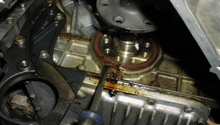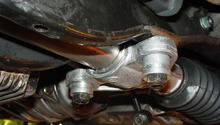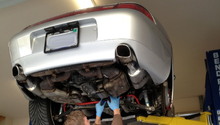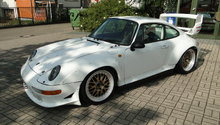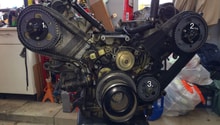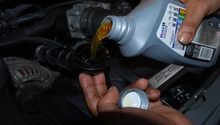Porsche 993: Why is My Car Leaking Oil?
Despite the old saying, "If it does not leak oil, it is not an air-cooled Porsche," the 993 was not designed to leak oil. Read on to determine the cause of an oil leak in your 993.
This article applies to the Porsche 993 (1993-1998).
The Porsche 993 is the last iteration of the air-cooled engine 911 and is therefore the culmination of years of engine development. However, even with the best engineering, age will eventually catch up with items such as rubber seals and o-rings located in the engine. An unfortunate result of these rubber components aging is that they can often begin to break down and leak oil. With the engine stuffed in the rear boot of the 993, determining the source of the leak typically requires inspecting the car from the underside. Fortunately, many of the oil leaks associated with the 993 are easily spotted and will allow you to determine the severity of that oil leak.

Materials Needed
- Floor jack & jack stands
- Phillips screwdriver
- Tire iron
- Cleaner or degreaser
- 10mm socket with ratchet
Pro Tip
It is recommended to clean the engine a few days before inspecting for leaks as they are more easily identified if surrounding areas are oil-free.
Step 1 – Lift the car and remove the undertray
To best inspect the engine for oil leaks, support the car with jack stands and, using the screwdriver, remove the undertray that covers the engine.
(Related Article: Porsche 993: How to Jack Up Your Porsche - Rennlist.com)
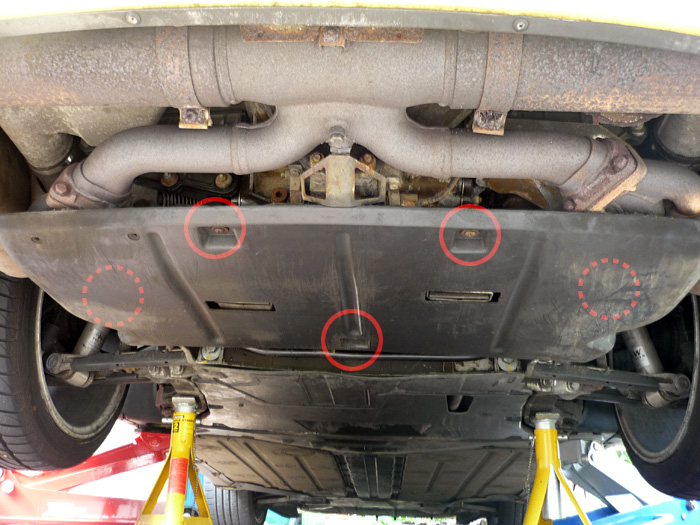
Step 2 – Inspect various components
Valve Covers
Perhaps the most infamous issue on the 993 is the potential for the valve cover gaskets to leak. The rubber valve cover gaskets are made of rubber that becomes brittle over time and no longer provides a sufficient seal between the cylinder head and valve cover. Although both the upper and lower valve cover gaskets on each bank have been known to leak, more often than not the leak occurs on the lower valve covers. Oil will drip from the lower edge of the valve covers down onto the exhaust heat exchangers and gets burned off when the engine is running. The result is often smoking when sitting stationary or the smelling of burnt oil. Additionally, cars that sit for longer periods without being driven will have the oil drip from the valve cover onto the heat exchanger before making its way onto the undertray and eventually the garage floor. Luckily, this type of leak can be easily spotted and is a fairly straightforward job that can be done at home.

Figure 2. Oil leak at valve cover. 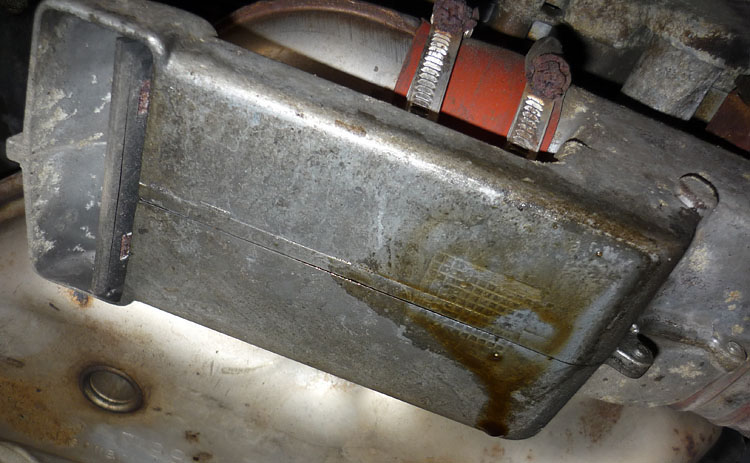
Figure 3. Underside of heat exchanger where oil will pool.
Timing Chain Covers
Similar to the valve cover gaskets, the timing chain cover gaskets are prone to leak on the 993. The timing chain covers utilize two types of seals to prevent oil leakage. The first is a continuous rubber gasket that is sandwiched between the machined engine surface and the timing chain cover. Secondly, on each stud, a rubber grommet-type seal is used to prevent leakage through the stud holes on the cover. Leaking can usually be spotted at the front of the engine (rear of the car) just on either side of the crank pulley. The gaskets are a bit more difficult to gain access to than those on the valve covers. Typically, the best way to perform this job yourself involves lowering the engine with a floor jack and removing the exhaust system and sheet metal supports. General consensus is that if the timing cover is not leaking excessively, leave it until a job arises that requires the engine to be removed. That being said, many owners have significantly reduced or eliminated their leaks by checking the tightness of the timing cover nuts and making sure they were torqued to 7 ft-lbs.
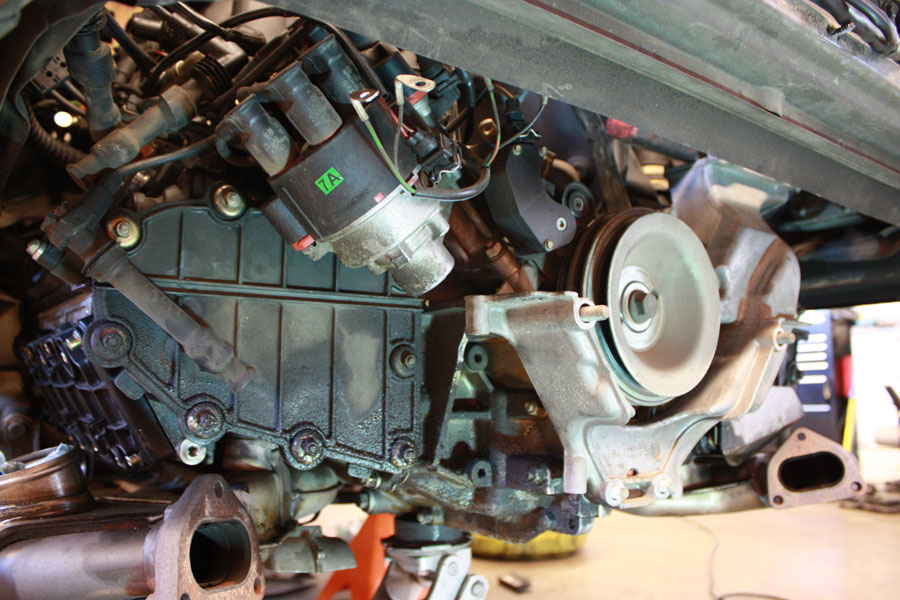
Rear Main Seal
While not the most common seal to leak, the rear main seal also has the potential to weep or leak oil. The rear main seal, often referred to as "RMS," is located at the rear of the engine (pointing to the front of the car) and seals the end of the crankshaft in the engine cases. The flywheel attaches to the end of the crankshaft and the transmission is then mated to the engine cases. Oil leaking or wetness between the engine and transmission often indicates a leak at the RMS. Owners usually are proactive in tending to this leak as the leaking oil can contaminate the clutch disc and require a new clutch. This job is pretty involved as it requires the removal of the transmission to gain access to the RMS. That being said, the job is fairly straightforward and can be accomplished in a day with only basic tools.
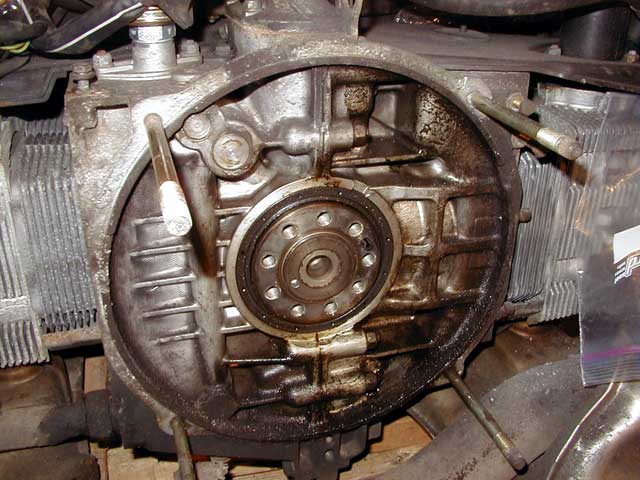
Crankcase Through-Bolts
The crankcase uses through-bolts to secure the two halves of the engine cases together, and these bolts use an o-ring to seal out oil. While not the most common oil leak, the through-bolt o-rings have been noted to leak on air-cooled 911's from time to time. You want to be very thorough in cleaning up oil leaks and making sure it is actually a through-bolt leaking as other engine components can leak down onto the bolts and make it appear as if they are the culprits. The replacement of a through-bolt o-ring is not as simple as removing the bolt and swapping in a new o-ring. The engine is required to be disassembled for the o-rings to be replaced. As with the timing chain cover gaskets, 993 owners will typically live with a through-bolt leak until an engine rebuild or engine disassembly is necessary. Just be sure to regularly inspect your engine oil level to ensure you are not running low.

Oil Return Tubes
The oil return tubes on all air-cooled 911 models have been known to leak oil. They are simply held in place and prevent oil leakage by the use of o-rings at each end of the tube. As with the other rubber parts discussed, the o-rings can no longer seal because they break down and harden after continuous heat cycles. Although the 993 has a dry-sump lubrication system, oil can settle in the bottom of the cases and seep past the return tube o-rings with the engine off, leaving you with an oil puddle. These tubes are easily inspected for leaks and can be replaced rather quickly.
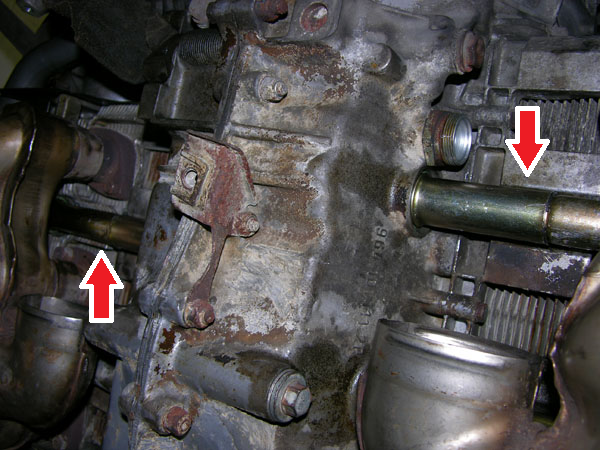
Oil Filter & Drain Plug
If you are experiencing an oil leak or oil splash in or near the rear wheel well on the passenger side of the car, inspect the oil filter and engine oil drain plug. Both of these items are located behind the inner splash guard between the body. A loose oil filter or drain plug bolt will weep oil and an can make a mess in or around the wheel well. Check the tightness on both items. You may consider doing an oil change while you are in there to eliminate the possibility of a bad oil filter seal or drain bolt crush washer.
(Related Article: Porsche 993: How to Change Oil - Rennlist.com)
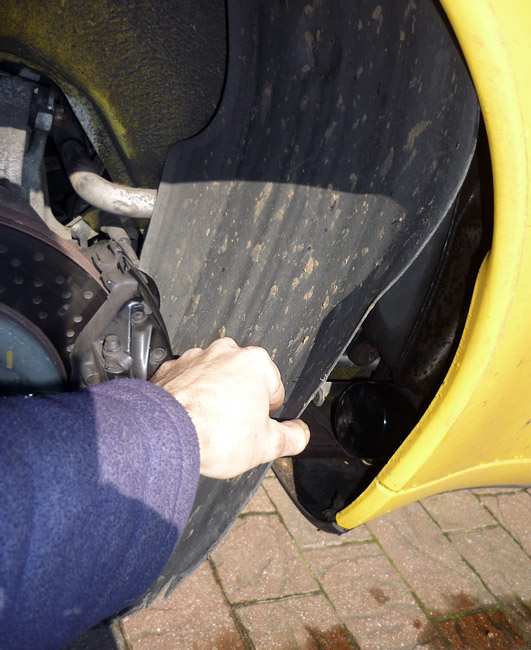
Related Discussions
- Help with Oil Leak- Rennlist.com
- 993 Carrera Timing Chain Cover Gasket - Rennlist.com
- How Serious are These Oil Leaks? - Rennlist.com

